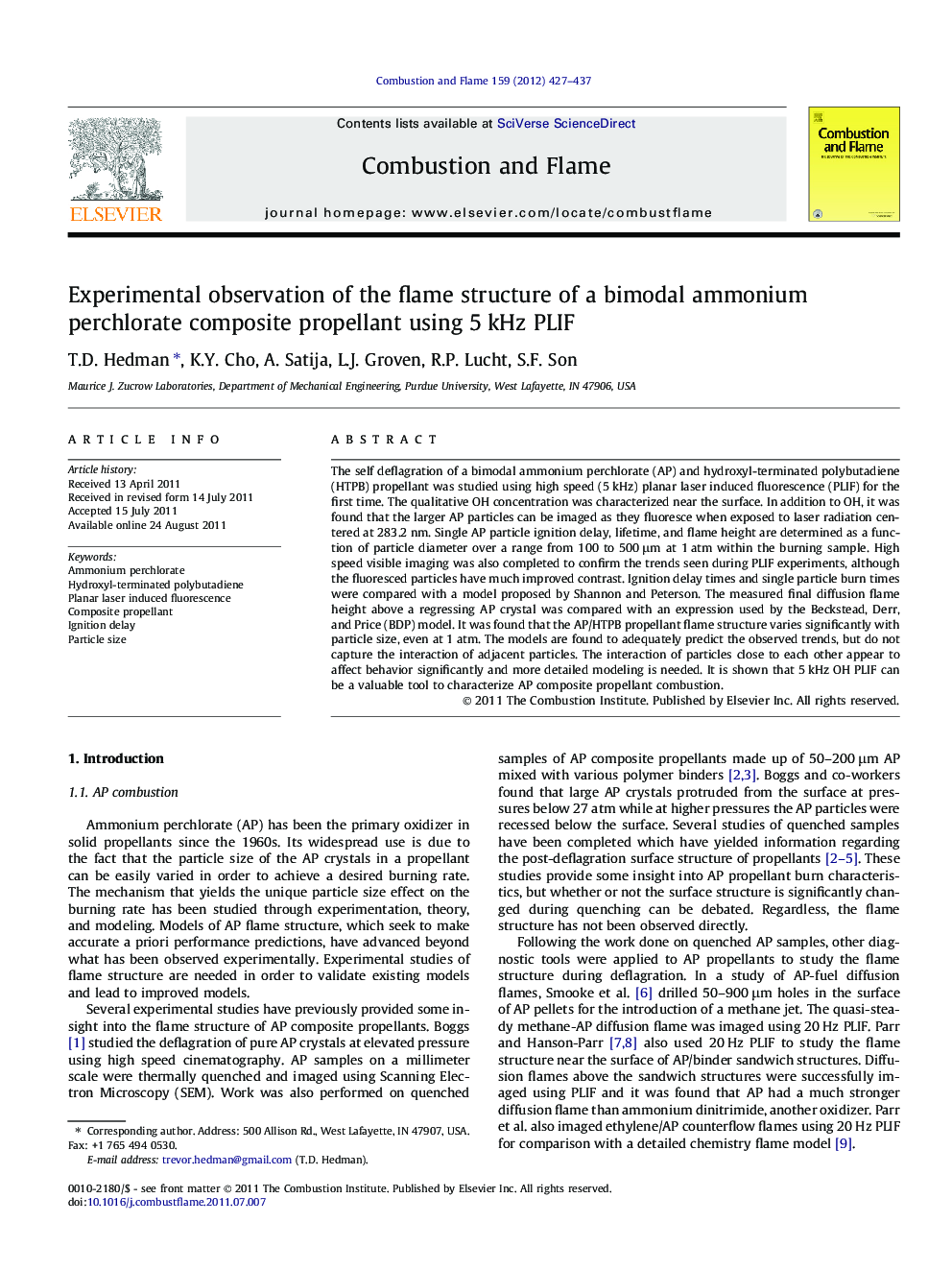| Article ID | Journal | Published Year | Pages | File Type |
|---|---|---|---|---|
| 169186 | Combustion and Flame | 2012 | 11 Pages |
The self deflagration of a bimodal ammonium perchlorate (AP) and hydroxyl-terminated polybutadiene (HTPB) propellant was studied using high speed (5 kHz) planar laser induced fluorescence (PLIF) for the first time. The qualitative OH concentration was characterized near the surface. In addition to OH, it was found that the larger AP particles can be imaged as they fluoresce when exposed to laser radiation centered at 283.2 nm. Single AP particle ignition delay, lifetime, and flame height are determined as a function of particle diameter over a range from 100 to 500 μm at 1 atm within the burning sample. High speed visible imaging was also completed to confirm the trends seen during PLIF experiments, although the fluoresced particles have much improved contrast. Ignition delay times and single particle burn times were compared with a model proposed by Shannon and Peterson. The measured final diffusion flame height above a regressing AP crystal was compared with an expression used by the Beckstead, Derr, and Price (BDP) model. It was found that the AP/HTPB propellant flame structure varies significantly with particle size, even at 1 atm. The models are found to adequately predict the observed trends, but do not capture the interaction of adjacent particles. The interaction of particles close to each other appear to affect behavior significantly and more detailed modeling is needed. It is shown that 5 kHz OH PLIF can be a valuable tool to characterize AP composite propellant combustion.
